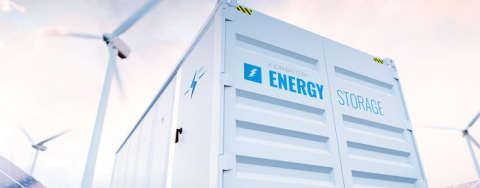FCR (Frequency Containment Reserve) is a key element of the power system that plays an important role in managing frequency stability. It acts as a first line of defence against frequency deviations from the norm, which is particularly important in the context of growing energy demand and changing energy generation conditions.
Main features of FCR
- Automatic activation – FCR is activated automatically as soon as a frequency deviation is detected in the power system (e.g. deviations from 50 Hz).
- Immediate response – FCR has a very short response time, usually a few seconds, which allows the system to be quickly balanced.
- Prevention of further deviations – FCR works to stop further frequency deviation before it reaches values that threaten system stability.
- Joint stabilisation in ENTSO-E – the countries participating in the European Network of Transmission System Operators for Electricity (ENTSO-E) maintain a certain amount of FCR, which enables joint stabilisation measures.
- Ensuring system stability – FCR is the first line of defence against failures resulting from sudden frequency changes, playing a key role in preventing blackouts.
- Security of energy supply – thanks to its fast response and stabilisation capacity, FCR helps to ensure the continuity of energy supply in the power system.
Frequency stabilisation
FCR works to stop the frequency from deviating further and stabilise it at a level close to the nominal value. All countries in the European transmission system (ENTSO-E) are required to maintain a certain amount of FCR, which allows for joint stabilisation of the system.
Who is FCR for?
Various providers can supply FCR services, as long as they are able to provide a stable and fast response to frequency changes in the power system. They must meet certain technical and operational requirements set by the transmission system operator to ensure fast and stable operation in the event of frequency deviations in the grid. In Poland, these requirements are regulated by Polskie Sieci Elektroenergetyczne (PSE). FCR providers can include:
- Traditional power plants - they have the ability to quickly increase or decrease power.
- Wind and photovoltaic farms - thanks to modern control systems, some renewable energy sources (RES) can also contribute to the provision of FCR, although their response must be regulated accordingly.
- Energy storage - is increasingly used in modern power systems.
- Combined heat and power plants (CHP) - generate electricity and heat at the same time.
- Large industrial consumers - large industrial plants with flexible energy requirements can participate in FCR by temporarily reducing or increasing their energy consumption.
- Aggregators - companies that aggregate small energy sources or flexible consumers from different entities can also provide FCR by combining and managing their capacities in a way that stabilises the system.
Application
FCR is the first line of defence for the power system before frequency deviations become critical. It plays a key role in ensuring the stability of the entire system, preventing potential blackouts. FCR is an indispensable element of the power system, supporting the security of energy supply and the operational stability of the grid.
Difference between aFRR, FCR and mFRR:
- FCR (Frequency Containment Reserve): Works in real time (milliseconds-seconds) and is designed to stop the frequency from dropping or rising in the event of a disturbance.
- aFRR: Automatic reserve that restores balance after a few seconds and works for a few minutes.
- mFRR (manual Frequency Restoration Reserve): Manual reserve activated by the operator in case of major or long-lasting disruptions that require additional support.

